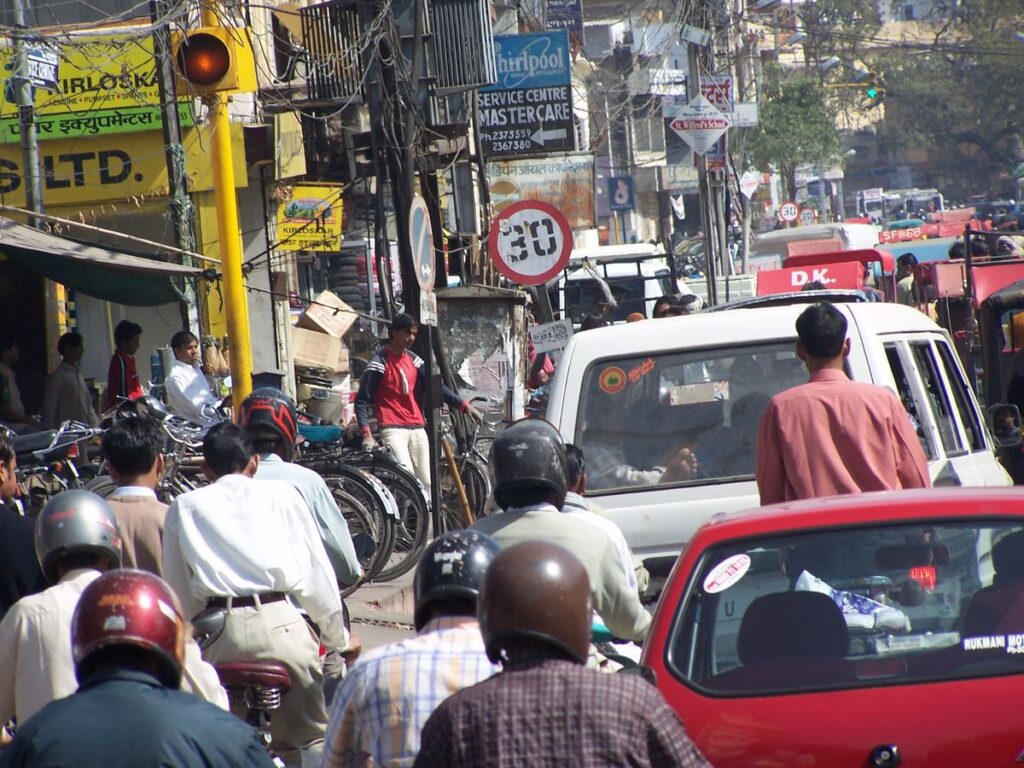📌 Overview: The New Rule in Brief
Uttarakhand will impose mandatory registration for all visitors to Mussoorie as of August 1, 2025. Hotels, guest‑houses, and homestays must enroll their guests on an official tourism portal during check‑in. Tourists provide contact, travel dates, vehicle number, and stay details via this system, after which they receive a QR‑coded pass
This measure responds to unchecked overcrowding and aims to streamline traffic and preserve the hill station’s fragile ecosystem.

 Why Was This Step Necessary?
Why Was This Step Necessary?
Visitor numbers nearly doubled—from 1.1 million in 2022 to over 2.1 million in 2024. Such rapid growth brought severe traffic congestion, public disruptions, and even fatalities—most notably, a tourist died when an ambulance couldn’t reach hospital due to jams.
Real-time data collection via QR registration is aimed at enabling authorities to manage daily inflows, prioritize ambulance access, and reduce gridlock along major routes like Gandhi Chowk to Mall Road.
 Implementation Protocol: How It Works
Implementation Protocol: How It Works
Accommodation registration: Hotels, homestays, and guest houses must register on the portal with property and capacity details.
Guest check-in registration: At arrival, guest details are entered and verified via OTP. A unique QR code is generated.
Entry checkpoints: Major entry points (Kimadi, Kempty Falls, Kuthal Gate) scan guest QR codes, and ANPR cameras verify vehicles.
The system will be enforced during peak seasons, not all year round.
 Industry Reactions: Mixed Feelings
Industry Reactions: Mixed Feelings
Positive: Several tourism industry leaders welcome the new system. Sanjay Aggarwal, Mussoorie Hotels Association president, believes data-led crowd control is long overdue and may protect the town from overtourism.
Negative: Some hoteliers anonymously called it a “hindrance,” fearing compliance challenges especially during peak tourist seasons.
 Personal Insight After 5 Years in Tourism Analysis
Personal Insight After 5 Years in Tourism Analysis
From my five years covering tourism trends across the Himalayas, Mussoorie’s move is overdue—but overdue is better than never. As hill stations like Manali and Shimla struggle with overcrowding and hazardous roadside parking, Mussoorie’s intercepting tourists via QR gates may genuinely help maintain walkable streets, safer roads, and cleaner environments.
While the system initially burdens businesses, real-time data is crucial for local bodies to plan for waste management, ambulance access, and parking. The success of similar pilot systems—such as for the four Dhams—shows that when well-implemented, they can balance tourism and sustainability.
 Benefits at a Glance
Benefits at a Glance
Crowd control: Limits unchecked footfall during festivals and holidays.
Traffic improvement: QR code screening helps reduce jams near Gandhi Chowk and Mall Road, easing strain on emergency services.
Environment protection: Better monitoring supports waste management and avoids ecological degradation.
Data‑backed decisions: Authorities gain real‑time footfall data, key for planning pilgrim safety and infrastructure around hotspots like Kempty and Lal Tibba.
 What Could Go Wrong?
What Could Go Wrong?
Poor compliance: If smaller homestays don’t register or tourists bypass checkpoints, the data will be incomplete.
Technical glitches: Portal downtime or OTP failures could frustrate visitors, especially during high volume weekends.
Privacy concerns: Some travelers may hesitate to share personal or vehicle details, fearing misuse.
Enforcement gaps: Inadequate staffing at checkpoints could lead to queueing and backlogs.
 Looking Ahead: Scalability & Expansion
Looking Ahead: Scalability & Expansion
This model might be rolled out to other high‑pressure areas like Nainital, Ranikhet, and Chardham routes, mirroring NGT directives after the Haridwar stampede in July 2025.
By tying space capacity (parking spots, guest rooms, road load) to daily visitor limits, Uttarakhand can use this system to prevent accidents, environmental degradation, and medical delays.
 Final Note
Final Note
Mussoorie’s new registration rule is a bold but necessary step toward sustainable hill‑tourism. While it introduces short‑term friction for businesses and visitors, the long‑term gains—safer roads, cleaner environment, smarter planning—are significant.
As someone who’s watched regional tourism evolve, I believe Mussoorie’s digitized control framework is the kind of innovation needed before it’s too late. With proper implementation and stakeholder training, this can become a model for hill station governance—not just in India, but globally.
Source: Times of India – Going to Mussoorie? Register first; Uttarakhand sets rule to curb crowd, ease traffic
Read full report on Times of India
For more updates on regional developments, visit our Uttarakhand news section.
